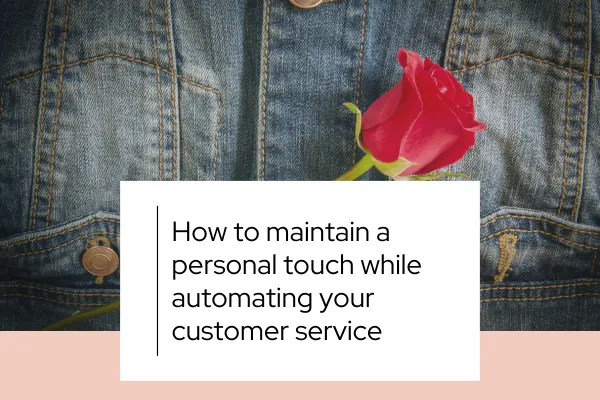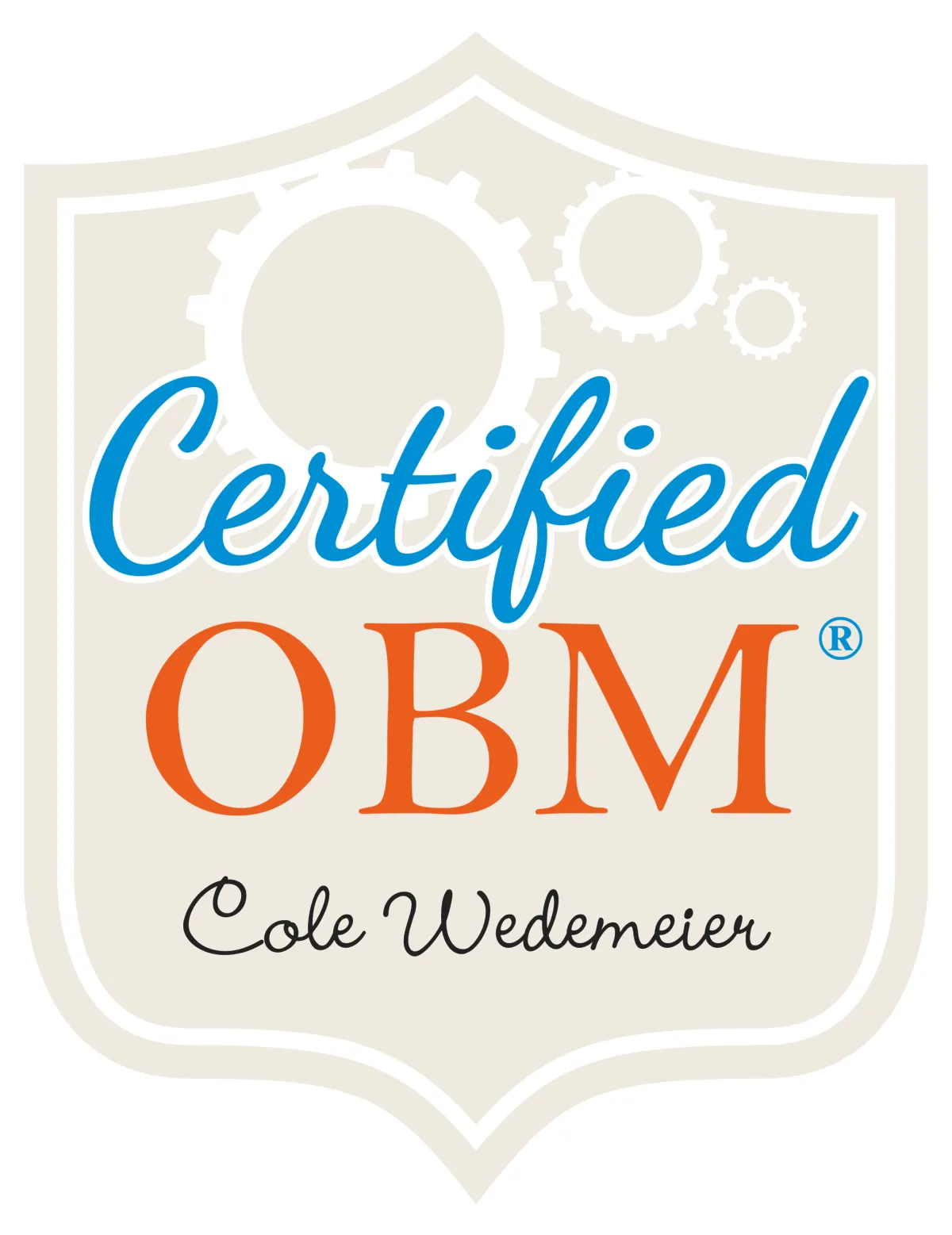

Automation for Customer Service: How to Maintain a Personal Touch while Automating Your Customer Service
This blog is a part of my Ultimate Guide to Business Process Automation. Check it out for more information.
Customer service is no longer just about addressing concerns in real-time. Automation in customer service can lead to improved experiences, streamlined processes, and better engagement. So, how can you make the most of it? Here’s what you need to know about using automation to streamline your customer service.
Why is Automation in Customer Service Important?
In the realm of customer service, there's a lot of repetition. Often, customers repeatedly seek the same information, such as where to find resources, how to make changes, or how to complete specific tasks. Automation can streamline these repetitive queries, allowing for immediate responses through FAQs or templated messages, leading to faster resolutions. However, the benefits of automation in customer service aren't limited to merely addressing inquiries. It also encompasses the broader customer experience. For instance, how straightforward is it for customers to engage with your business? If you're a creator or coach, is it easy for your clients to submit exercises or provide feedback? Can they effortlessly leave a testimonial without you prompting them? The goal is to harness automation in a way that simplifies interactions while maintaining a top-notch experience. If executed correctly, not only will your customer service benefit, but customers will also have memorable experiences they'll want to share positively.
1. Customizing Automation Based on Customer Behavior
Before diving into specific areas, it's crucial to recognize that all automation should be aligned with your business's customer behavior. This ensures that the messaging and timing are in tune with what your customer expects and needs. Here are a few ways to incorporate automation:
Abandoned Carts:
If a customer adds items to their cart but doesn't check out, an automated email can remind them of their selections. This might also be an opportunity to offer a discount, enticing them to finalize the purchase.
Follow-ups:
Has a potential client expressed interest in your services but hasn't taken the next step? An automated follow-up email can rekindle their interest. Life gets hectic, and sometimes, a nudge can make all the difference.
Milestones:
Recognize customer milestones. If a client completes a specific number of sessions, sends them an automated congratulatory message. It shows you value their journey with you, whether that's in coaching, finance, therapy, or any other domain.
2. Creating Personal Touchpoints
Understanding your customer's mindset is crucial. Say they've downloaded a resource from your site. An automated email can provide additional insights related to that download. This isn't about pushing a sale; it's about connecting with the customer, offering value, and showing that you understand their needs.
3. Segmentation: Tailoring Your Communication
Segmentation allows you to tailor your automated messages more effectively. Knowing where your clients come from or why they engaged with your brand helps in personalizing your outreach.
For instance, if you know a client discovered you via a podcast about professional dressing, an email discussing the importance of dressing appropriately for networking can resonate. Your automated communications should align with their reasons for connecting with your brand.
Furthermore, segment your customer base into various categories—current clients, past clients, course members, etc. This helps ensure the information they receive is most relevant to their relationship with you. Knowing your audience, be it women, men, professionals, or casual enthusiasts, helps craft a message that resonates.
4. The Power of Personalization
Personalization is more than just addressing a client by their first name or knowing their birthday. It's about understanding their preferences, interests, and needs. Knowing your client list in-depth allows you to customize automated responses better. This encourages them to learn more about your offerings and deepens their engagement with your brand.
Automation in customer service, when done right, can drastically enhance the customer experience. It allows businesses to be more proactive, responsive, and aligned with customer needs, ensuring that each interaction is meaningful and impactful. By customizing, segmenting, and personalizing your outreach, you're not just providing service—you're building lasting relationships. Still have questions? Feel free to reach out to learn more.

Automation for Customer Service: How to Maintain a Personal Touch while Automating Your Customer Service
This blog is a part of my Ultimate Guide to Business Process Automation. Check it out for more information.
Customer service is no longer just about addressing concerns in real-time. Automation in customer service can lead to improved experiences, streamlined processes, and better engagement. So, how can you make the most of it? Here’s what you need to know about using automation to streamline your customer service.
Why is Automation in Customer Service Important?
In the realm of customer service, there's a lot of repetition. Often, customers repeatedly seek the same information, such as where to find resources, how to make changes, or how to complete specific tasks. Automation can streamline these repetitive queries, allowing for immediate responses through FAQs or templated messages, leading to faster resolutions. However, the benefits of automation in customer service aren't limited to merely addressing inquiries. It also encompasses the broader customer experience. For instance, how straightforward is it for customers to engage with your business? If you're a creator or coach, is it easy for your clients to submit exercises or provide feedback? Can they effortlessly leave a testimonial without you prompting them? The goal is to harness automation in a way that simplifies interactions while maintaining a top-notch experience. If executed correctly, not only will your customer service benefit, but customers will also have memorable experiences they'll want to share positively.
1. Customizing Automation Based on Customer Behavior
Before diving into specific areas, it's crucial to recognize that all automation should be aligned with your business's customer behavior. This ensures that the messaging and timing are in tune with what your customer expects and needs. Here are a few ways to incorporate automation:
Abandoned Carts:
If a customer adds items to their cart but doesn't check out, an automated email can remind them of their selections. This might also be an opportunity to offer a discount, enticing them to finalize the purchase.
Follow-ups:
Has a potential client expressed interest in your services but hasn't taken the next step? An automated follow-up email can rekindle their interest. Life gets hectic, and sometimes, a nudge can make all the difference.
Milestones:
Recognize customer milestones. If a client completes a specific number of sessions, sends them an automated congratulatory message. It shows you value their journey with you, whether that's in coaching, finance, therapy, or any other domain.
2. Creating Personal Touchpoints
Understanding your customer's mindset is crucial. Say they've downloaded a resource from your site. An automated email can provide additional insights related to that download. This isn't about pushing a sale; it's about connecting with the customer, offering value, and showing that you understand their needs.
3. Segmentation: Tailoring Your Communication
Segmentation allows you to tailor your automated messages more effectively. Knowing where your clients come from or why they engaged with your brand helps in personalizing your outreach.
For instance, if you know a client discovered you via a podcast about professional dressing, an email discussing the importance of dressing appropriately for networking can resonate. Your automated communications should align with their reasons for connecting with your brand.
Furthermore, segment your customer base into various categories—current clients, past clients, course members, etc. This helps ensure the information they receive is most relevant to their relationship with you. Knowing your audience, be it women, men, professionals, or casual enthusiasts, helps craft a message that resonates.
4. The Power of Personalization
Personalization is more than just addressing a client by their first name or knowing their birthday. It's about understanding their preferences, interests, and needs. Knowing your client list in-depth allows you to customize automated responses better. This encourages them to learn more about your offerings and deepens their engagement with your brand.
Automation in customer service, when done right, can drastically enhance the customer experience. It allows businesses to be more proactive, responsive, and aligned with customer needs, ensuring that each interaction is meaningful and impactful. By customizing, segmenting, and personalizing your outreach, you're not just providing service—you're building lasting relationships. Still have questions? Feel free to reach out to learn more.



